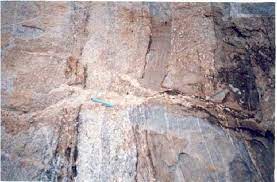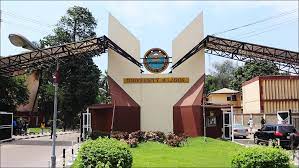
Nigeria, a country located in West Africa, boasts a rich geological history that spans billions of years. One of the prominent rock formations found within its geological landscape is gneiss. Gneisses are metamorphic rocks characterized by their banded appearance, resulting from the intense heat and pressure that they have undergone over geological time.
This paper delves into the geology and petrography of Nigerian gneisses, exploring their origin, mineral composition, structural features, and significance in the broader context of the country's geology.
Geological Setting
The Nigerian geology is primarily divided into three major geological terrains: the Basement Complex, the Sedimentary Basins, and the Younger Granites. The Basement Complex is the oldest of these terrains and is composed of various metamorphic and igneous rocks. Within this complex, gneisses are abundant and play a significant role in deciphering the geological history of the region.
Origin and Formation
Gneisses are a product of regional metamorphism, a process that involves the alteration of pre-existing rocks due to heat and pressure. The protoliths (original rocks) that give rise to gneisses can include sedimentary, igneous, or even pre-existing metamorphic rocks. In Nigeria, the Basement Complex contains a wide range of protoliths that have undergone multiple episodes of metamorphism over millions of years.
The formation of Nigerian gneisses can be attributed to the convergence of tectonic plates and the subsequent collision and subduction of these plates. The immense heat and pressure generated during these tectonic events caused the minerals within the protoliths to recrystallize and reorganize, leading to the development of the characteristic banded texture seen in gneisses.
Mineral Composition and Petrography
The mineral composition of Nigerian gneisses can vary widely depending on the protolith and the specific conditions of metamorphism. Generally, gneisses are composed of minerals such as quartz, feldspar (plagioclase and orthoclase), and micas (biotite and muscovite). These minerals often form alternating light and dark bands, giving gneisses their distinctive appearance.
In petrographic terms, Nigerian gneisses can be classified into several subtypes based on their mineral content and texture. For instance, augen gneisses are characterized by large, eye-shaped feldspar crystals surrounded by a finer-grained matrix. Migmatitic gneisses represent a transition between igneous and metamorphic rocks, featuring both igneous and metamorphic mineral assemblages due to partial melting.
Structural Features
The structural features of Nigerian gneisses provide valuable insights into the tectonic history of the region. Foliation, a planar arrangement of mineral grains caused by the alignment of minerals under pressure, is a common feature in gneisses. The orientation of foliation can indicate the direction and intensity of the tectonic forces that acted upon the rock during metamorphism.
Significance and Economic Importance
Nigerian gneisses hold both scientific and economic significance. From a scientific standpoint, studying the mineral assemblages and structural features of gneisses helps geologists understand the geological history of the region. Gneisses can serve as indicators of ancient tectonic processes, providing clues about the evolution of the Earth's crust in Nigeria.
Economically, gneisses and other rocks within the Basement Complex have potential uses in construction, as they often possess excellent mechanical properties such as hardness, durability, and resistance to weathering. The banded appearance of gneisses can also be aesthetically pleasing, making them valuable as ornamental stones. Additionally, some types of gneisses may contain economically important minerals, such as mica, which has applications in the electronics and cosmetics industries.
Challenges and Future Directions
Studying Nigerian gneisses comes with its challenges. The complex tectonic history and multiple episodes of metamorphism make unraveling the geological history a daunting task. Moreover, the lack of detailed geological mapping and limited access to remote areas hinder comprehensive research.
Future research in this field could involve more detailed petrographic and geochemical analyses to unravel the origins of various gneiss subtypes and their relationship to other rock formations in Nigeria. Advances in dating techniques, such as radiometric dating and isotopic analysis, can provide valuable information about the timing of metamorphic events and the age of protoliths.
The geology and petrography of Nigerian gneisses offer a fascinating window into the deep geological history of the country. These metamorphic rocks, shaped by immense heat and pressure, provide clues about tectonic events that have shaped the West African region over millions of years.
By understanding the mineral composition, structural features, and economic potential of Nigerian gneisses, geologists can continue to piece together the puzzle of the Earth's dynamic past and contribute to both scientific knowledge and practical applications.























